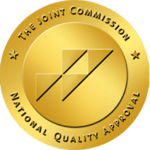Crack is a crystallized form of the drug that is smoked. It is more potent and addictive than cocaine. It is considered more addictive and potent than powder cocaine.
Crack is one of the most prevalent drugs to ever be abused. In 2021, the Centers for Disease Control released a report stating that the overdose deaths in the US relevant to crack use reached 24,538. It has gotten to the point that if a user were to be asked “what is crack”, their answer would be “life” when in reality, it is a step closer to death.
That number reflects a 31% increase in overdose deaths during the pandemic, which authorities expect to increase. This increase is believed to have been fueled by the general atmosphere of fear and uncertainty caused by the pandemic and the resulting isolation from the quarantine.
Those seeking any kind of release from this fear and uncertainty turned to the near-instant euphoria given by crack, which was one of the few illegal substances still available from dealers even during the pandemic.
What Is Crack and How Is It Different From Cocaine?
Crack is actually derived from cocaine. Its name comes from the crackling sound the substance makes when heated. Crack is made by mixing baking soda, water, or sometimes ammonia with powdered cocaine. This mix is then boiled until only the solidified crack is formed. The solidified result is a hard, mineral-like crystalized form called a “rock”, which is then broken up into smaller chunks, making it easier to pack and then sell.
Despite the fact that it is the product of a mixture, the effect of crack is highly concentrated, making it immensely addictive, even on the first few tries. The effect is also dramatically quick, giving a rather brief but intense “high”. The intense high that almost instantly hooks users is also largely responsible for most overdose cases, as inexperienced users fail to realize just how much they have already consumed.
Crack is also different from cocaine in how it is taken. Cocaine is a potent and fast-acting drug. It comes in powder form and the most common way of taking it is by direct nasal inhalation or “snorting”.
There are depictions wherein it is rubbed on the gums instead of being snorted. This is usually done by people who are more experienced in its use. There are also accounts that the gum rubbing of cocaine is to reduce the perforation of the nasal septum from regular cocaine snorting.
The damage to the nasal septum is what accounts for the nosebleeds in cocaine snorters. Crack, on the other hand, comes in a brittle, crystalline form. It is crushed, heated, and “smoked”. This form of delivery goes straight to the lungs and produces an almost immediate intense euphoric effect.
What Are the Signs and Symptoms of Crack Use?
Being a potent substance with intense and near-immediate effects once taken, crack also necessarily comes with very visible signs and symptoms.
Authorities, particularly those belonging to the drug enforcement group and emergency response, are keen to spot these signs. Since users are known to be quite close to an overdose when these symptoms become obvious. This is mainly because they don’t know how to regulate their use.
The signs and symptoms associated with crack use are not limited to being physical, as the substance tends to have an effect on multiple facets of the user.
Physical Signs
The physical signs seen on someone using crack are a dead giveaway, as they are not only difficult to hide. They are difficult to hide because once they start manifesting, the crack user usually does not have enough sense left to hide the signs.
- Increased heart rate
- Rapid or shallow breathing
- Elevated blood pressure
- Profuse sweating
- Constant scratching
- Dilated pupils
Behavioral Signs
- Preference towards isolation
- Tendency towards aggression
- A tendency towards criminal behavior
- Growing financial issues
- Sudden mood swings
Psychological Signs
- Tendency to be manic in activities
- Psychosis
- Paranoia
- Unexplained anxiety
These changes have varying degrees of severity, with some going away not long into our drug and alcohol detox center, while others persist well into the rehabilitation phase, depending upon the severity of the damage done by crack use.
Why Do People Get Hooked on Crack?

Crack affects how the body handles its own chemicals, particularly the distribution. Normally the body releases dopamine, a neurotransmitter associated with pleasure and motivation, through the brain reward system. Crack interferes in this and keeps on releasing dopamine.
This creates a scenario where a person gets euphoria on demand through the crack. Considering just how many people live silent lives of sorrow and depression, the reality is no wonder many turn to substances like crack for some form of release that they are not likely to get anywhere else.
Efforts to rationalize the high incidence of crack addiction pointed to the possibility of lower distribution prices compared to other substances. Findings, however, show that contrary to the popular belief that crack is cheaper than cocaine and other abused substances, it is actually not.
This contradictory finding instead points to the possibility that crack is far easier to acquire than other drugs. A 2020 report from the US Sentencing Commission, however, revealed that crack trafficking offenders have decreased by 22.8% since 2016.
While crack is not the most prevalently abused substance in the US, it does account for a disturbing number of recorded users, and an even alarming number of related overdose deaths.
What Happens During Crack Detox?
It is worth noting that despite the many side effects that come with crack use, many still use it because it gives a sense of euphoria said to not be found with any other illegal substance.
This being said, it is to be expected that detox and withdrawal from something that gives a huge amount of pleasure could be beyond agonizing for many crack users.
This is why crack detox is noted to be among the most physically and mentally taxing of all.
The more common symptoms of crack withdrawal include:
- Anxiety
- Paranoia
- Sudden mood swings
- Restlessness
- Insomnia
- Severe agitation and irritation
- Disrupted sleep patterns
- Fatigue
- Depression
- Tremors and twitches
- Inability to focus
- Incoherent thoughts
- Phantom pains
In many cases, quitting crack is medically assisted, as the withdrawal symptoms could be so severe that the patient does not want to push through with rehabilitation. Therefore, a medicated assisted treatment program will be needed.
As there is also a great need to address the psychological dependency that the person developed while on crack, specialized therapy is also required.
Individual Therapy
Individual therapy is a form of psychotherapy where a trained professional therapist works with an individual directly, addressing all issues the individual may have relevant to their condition.
Some people respond to this treatment better as they are able to focus on the treatment more and internalize it with no distractions, as opposed to receiving therapy with a group.
Group Therapy
In other instances, some patients react better when they are able to undergo treatment with others with whom they could relate. These people find more comfort in the thought that they are not going through the ordeal alone, and this helps in improving their chances of recovery.
This form of therapy works better with people who need a social component in their recovery. One or two therapists typically join a group in sessions to moderate the discussions and activities that occur during therapy.
Cognitive Behavioral Therapy
This type of treatment addresses the mental state of the patient undergoing rehabilitation. As withdrawal could be tremendously stressful for anyone who goes through it, patients must be made to understand that it truly is for their own benefit.
As many recovering substance abusers might only be starting to regain proper use of their mental and cognitive functions, they need all the help they could get in forming the proper mental frame to push through rehabilitation and also maintain the sobriety they have already started on.
Dialectical Behavior Therapy
Many patients undergoing withdrawal find the entire process so difficult that they are filled with doubt if they could complete it, or even maintain sobriety once rehabilitation is completed.
Dialectical behavior therapy seeks to enhance a person’s mental state so that they build the confidence and coping skills needed to address their doubts and thoughts that could lead to self-harm.
Westwind Recovery® Can Assist With Crack Addiction
The journey to sobriety is never easy, but it is definitely a necessary one. Westwind Recovery® understands that it is always a personal journey.
We are here to help make the journey more doable. Let us help make sure that the path is made clear for you as you take it. Contact us today to get started.

Dr. Deena is the Chief Clinical Officer of Westwind Recovery®, an award-winning outpatient treatment center in Los Angeles where she oversees the clinical and administrative program and treatment methods. Dr. Deena is a doctor of psychology and licensed clinical social worker since 1993. LCSW #20628. Originally from the East Coast, Dr. Deena has worked running treatment centers, worked as a therapist in psychiatric hospitals as well as school settings and currently has a thriving private practice in the LA area. Dr. Deena has appeared regularly on the Dr. Phil Show as an expert since 2003. She has also been featured on many other TV shows, podcasts and has contributed to written publications as well as podcasts.



